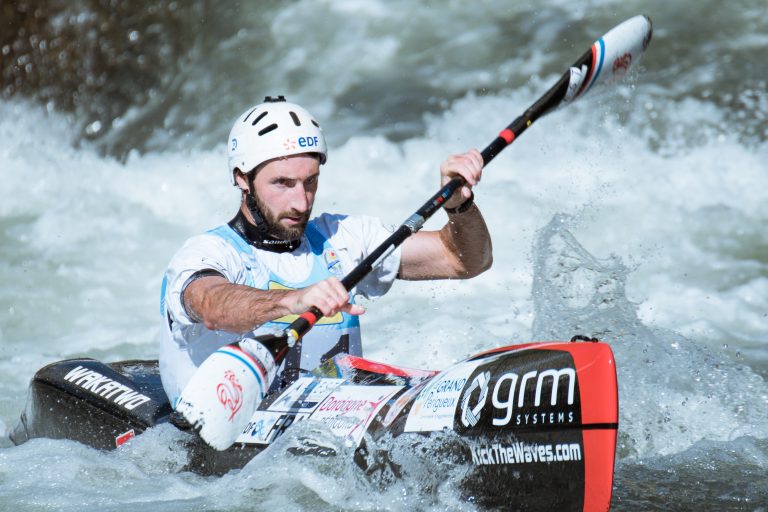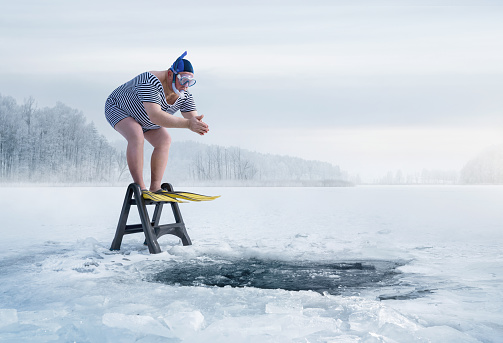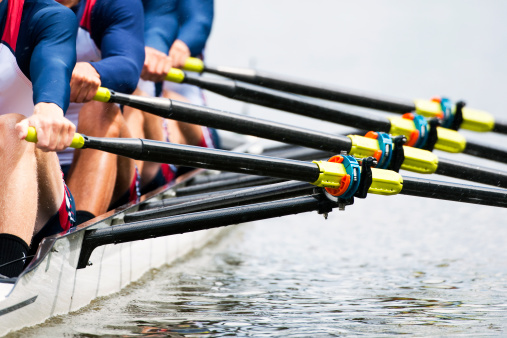General Rules of Synchronized Diving
Imagine two divers poised on the edge of the platform, their movements mirroring each other with precision. As you prepare to take the plunge into the world of synchronized diving, there are key rules to keep in mind that govern this elegant and challenging sport. From selecting the perfect dive to ensuring seamless synchronization with your partner, each aspect plays a crucial role in achieving a perfect score. Stay tuned to discover the intricacies of dive selection, fault identification, and the competitive format that will keep you on the edge of your seat throughout the entire event.
Dive Selection
When selecting dives for synchronized diving, you should consider the level of difficulty and synchronization required. The dives chosen must align with the skill level of both divers to ensure a seamless performance. Technique tips are crucial in mastering each dive. Focus on proper body alignment, entry position, and minimizing splash to score higher. Training drills should emphasize coordination and precision to enhance synchronization during execution.
Mental preparation plays a significant role in synchronized diving. Visualizing successful dives can boost confidence and alleviate performance anxiety. Communication skills are essential for effective coordination between partners. Clear and concise signals are vital during the dive to maintain synchronization. Establishing a non-verbal communication system can help overcome challenges during the routine.
When deciding on dives, consider the strengths and weaknesses of each diver. Choose dives that showcase your strengths while also challenging you to improve. It is important to strike a balance between pushing boundaries and maintaining consistency. Work closely with your partner to understand their preferences and abilities to create a harmonious routine.
Partner Requirements
Considering the synchronized diving discipline, the partnership in this sport demands specific requirements to achieve seamless coordination and performance excellence. Skill level plays a crucial role in determining the effectiveness of a diving duo. Both divers must possess a similar level of expertise to execute complex dives with precision. Discrepancies in skill level can lead to synchronization issues and impact the overall performance. Therefore, partners must undergo rigorous training to ensure they are evenly matched in their abilities.
Moreover, the trust factor between diving partners is paramount. Trusting your partner is essential when attempting intricate dives that require impeccable timing and coordination. Each diver must have faith in their partner's capabilities to perform their part of the dive correctly. Trust not only fosters a strong bond between partners but also enhances their synchronization during dives. Building trust takes time and is cultivated through hours of practice and mutual understanding.
In synchronized diving, success hinges on the combined efforts of both divers. Their skill level and trust in each other are the foundation upon which their partnership is built. By meeting the requirements of skill and trust, diving partners can strive for excellence in their performances and achieve synchronization that captivates audiences.
Synchronization Timing
Achieving perfect synchronization in diving routines relies heavily on precise timing between partners. Timing accuracy is crucial to executing flawless dives. To achieve this, divers must establish a deep understanding of each other's movements, allowing them to anticipate and match each other's actions seamlessly. Team communication plays a vital role in ensuring that both divers are in sync throughout the routine. Clear and effective communication helps partners coordinate their movements, ensuring they dive at the exact same moment.
Timing accuracy is not only about executing the dive simultaneously but also about the speed and rhythm of movements. Partners need to synchronize their approaches, takeoffs, somersaults, and entries to create a harmonious performance. This level of precision requires constant practice and synchronization drills to refine each element of the dive.
Team communication goes beyond verbal cues; it involves developing a non-verbal understanding between partners. Through shared experiences and countless hours of practice, divers can develop an intuitive sense of each other's timing and movements. This unspoken connection allows them to adjust quickly during a dive if needed, maintaining synchronization even in challenging situations.
In essence, timing accuracy and team communication are the cornerstones of successful synchronized diving. By mastering these aspects, divers can elevate their performances and achieve stunning displays of unity and grace in the water.
Degree of Difficulty
To understand the degree of difficulty in synchronized diving, you must assess the intricacies of your chosen dives and the technical skills required to execute them with precision. This evaluation involves a thorough skill assessment and a deep understanding of the training techniques necessary for mastering high-level dives.
- Skill Assessment: Before attempting a dive, it is crucial to evaluate your individual skills and those of your diving partner. Understanding each other's strengths and weaknesses will help in selecting dives that are challenging yet within your capabilities.
- Training Techniques: Enhancing your diving skills requires rigorous training techniques. This includes practicing dives repeatedly to perfect synchronization, mastering body positioning, and refining techniques to execute complex maneuvers flawlessly.
- Dive Selection: Choosing the right dives is essential in determining the degree of difficulty. Divers must select dives that push their limits while ensuring they can perform them accurately and synchronously with their partner.
- Execution Precision: The execution of a dive with a high degree of difficulty demands precision and coordination. Every movement, from takeoff to entry, must be executed with utmost accuracy and synchronicity to achieve a successful dive.
Faults and Penalties
When errors occur during a synchronized dive, they are subject to specific faults and penalties that can impact the overall score of the performance. Common mistakes in synchronized diving that can lead to penalties include starting the dive before the signal, executing movements out of sync, or failing to maintain a consistent distance between the divers during the dive. These errors can result in penalty consequences that are enforced by the judges to maintain fairness and adherence to the rules of the sport.
Penalty consequences in synchronized diving can vary depending on the severity of the mistake. Minor errors, such as slight synchronization issues or small deviations from the required form, may lead to deductions from the overall score. More significant mistakes, such as performing the wrong dive or a major synchronization error, can result in harsher penalties, including disqualification from the competition or a substantial reduction in points.
It is crucial for synchronized divers to minimize the risk of faults and penalties by practicing diligently, enhancing communication with their partner, and ensuring they have a strong understanding of the rules and requirements for each dive. By avoiding common mistakes and focusing on precision and synchronization, divers can increase their chances of achieving a successful performance with minimal penalty consequences.
Scoring System
Understanding the scoring system in synchronized diving is essential for competitors aiming to maximize their performance outcomes. To excel in this sport, you must grasp the intricacies of how judges evaluate your dives. Here are four key points to consider:
- Judging Criteria: The judging criteria in synchronized diving focus on two main aspects: synchronization and execution. Synchronization refers to how closely the divers perform their movements together, while execution evaluates the individual diver's technique, form, and entry into the water.
- Technique: A flawless technique is crucial in synchronized diving. Divers must execute each maneuver with precision, demonstrating control, flexibility, and grace throughout the dive. The technical proficiency of each diver greatly influences the overall score.
- Execution Scores: Judges assign scores based on the quality of execution displayed by the divers. Factors such as body alignment, somersault speed, entry without splash, and overall fluidity impact the execution scores. Consistency in executing complex maneuvers also plays a significant role in the final score.
- Judging Panel: The judging panel consists of experienced professionals who assess the dives based on predetermined criteria. Their expertise and keen eye for detail ensure fairness and accuracy in scoring, providing a comprehensive evaluation of each synchronized dive.
Competition Format
The competition format for synchronized diving typically involves teams of two divers performing a series of dives in synchronization. Team dynamics play a crucial role in this format, as both divers need to have a strong understanding of each other's movements, timing, and strengths to execute flawless dives. Communication between teammates is key to achieving synchronization and presenting a cohesive performance to the judges.
Judging criteria in synchronized diving focus on the precision of movements, alignment in the air, entry into the water, and overall synchronization between the divers. Judges look for seamless transitions between the individual dives and how well the divers mirror each other throughout the routine. Deductions can occur for any lack of synchrony, imperfect form, or failed execution of dives.
To excel in this format, divers must adhere to a rigorous training regimen that emphasizes coordination, balance, flexibility, and strength. International standards set the bar high for synchronized diving competitions, pushing teams to showcase creativity, difficulty, and technical proficiency in their dives. By mastering team dynamics, understanding judging criteria, and following a disciplined training routine, synchronized diving pairs can aspire to reach the top ranks in the sport.
Frequently Asked Questions
Can Synchronized Divers Wear Different Colored Suits to Help Judges Differentiate Between Them During the Dive?
When synchronized divers opt for different colored suits, judging clarity gets a boost. It aids in differentiating between teammates mid-dive. This color coordination, while not a competitive advantage, enhances the visual appeal and precision of the sport.
Is There a Limit to the Number of Dives That a Synchronized Diving Pair Can Perform During a Competition?
In synchronized diving competitions, the dive order is crucial, and there are time limits for each dive. Remember, the number of dives a pair can perform is typically set by the competition guidelines to ensure fairness and efficiency.
Are There Specific Rules Regarding the Height From Which Synchronized Divers Must Perform Their Dives?
In synchronized diving, height regulations ensure safety and fairness, giving competitive advantages to pairs. Divers must adhere to specific guidelines for consistency and visual cues, enhancing their performance and overall synchronization during competitions.
What Happens if One Diver in a Synchronized Pair Gets Injured During a Competition, Are They Allowed to Continue or Is the Pair Disqualified?
If one diver in a synchronized pair gets injured during a competition, the injury protocol determines if they can continue. Disqualification rules may apply if continuing jeopardizes safety or performance standards. The decision balances concern for the injured diver and fairness to the pair.
Are Synchronized Divers Allowed to Communicate With Each Other Verbally or Through Hand Signals During Their Dives?
During synchronized diving, non-verbal communication is key. Visual cues like eye contact and body language ensure team synchronization and build trust. Divers rely on these signals, enhancing their performance without the need for spoken words.






